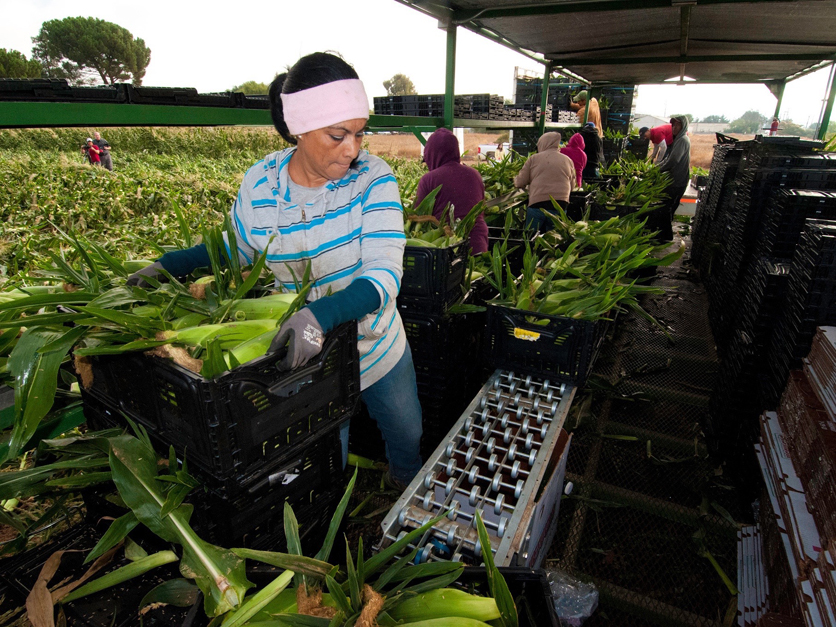A bipartisan farm labor reform bill released Wednesday would expand the H-2A program to year-round workers and provide growers relief on wage rules, while offering legal status to existing agricultural workers who are undocumented.
The bill, which has the backing of the United Farm Workers as well as leading agriculture groups, with the notable exception of the American Farm Bureau Federation, includes several H-2A reforms proposed this summer by the Trump administration, including changes to wage requirements and a streamlining of the application process.
In exchange for those reforms and getting legal status for their current employees, farms would be required for the first time to check the eligibility of hires using the E-Verify system.
The bill’s lead Democratic sponsor is California Rep. Zoe Lofgren, who chairs the House Judiciary Committee’s immigration subcommittee, and the bill was introduced with the support of 23 other Democrats and 20 Republicans.
The bill still faces a long, uncertain path to becoming law. Supporters acknowledged that they haven't been able to get the support of the White House and that congressional conservatives may object to providing legal status to a group of workers who are in the country illegally.
But Lofgren said the bill “offers stability for American farms by providing a path to legal status” for existing workers, and it "addresses the nation's future labor needs by modernizing an outdated system for temporary workers, while ensuring fair wages and workplace conditions.”
Rep. Doug LaMalfa, R-Calif, said “this is the best effort we’ve had in some time to move something forward.”
In a big victory for dairy producers and other farmers who need year-round labor, the bill would for the first time expand H-2A from being just a seasonal program. Year-round workers would be eligible for a three-year visa under a special new, capped program. The departments of Labor and Agriculture could increase the visa caps to meet market demands.
Half of the workers allowed under the year-round program, which would initially be limited to a total of 20,000 workers, would be reserved for the dairy industry.
For farmers who want access to permanent workers, the bill would dedicate an additional 40,000 green cards per year for agricultural workers.
Another provision would authorize a pilot program within H-2A to allow workers to move between farms.
Other provisions of the bill are aimed at addressing complaints that farmers have about rising H-2A wage rates and the cost of housing H-2A workers.
The bill would impose a one-year freeze in 2020 for H-2A wage rates and then limit annual fluctuations. Starting in 2021 and continuing through 2029, H-2A wage rates generally couldn’t fall by more than 1.5% or increase by more than 3.25% annually. Wage rates would rise by an additional percentage point if the rate is less than 10% above the federal or state minimum wage.
A new wage structure would be developed and put in force for 2030 and beyond.
The wage cap represented a "tremendous concession" on the part of the United Farm Workers, Lofgren said.
Borrowing from a proposed rule that the Labor Department issued this summer, the bill includes provisions to provide differing wage rates for various occupations. Some workers such as machine operators would see higher wages, while field workers could see decreases.
The program's “adverse effect wage rates,” or AEWR, set a floor for what farms typically have to pay the workers based on prevailing regional wages for farm labor. The rates are adjusted annually based on the gross hourly rate for field and livestock workers, based on the semiannual farm labor survey compiled by USDA’s National Agricultural Statistics Service.
Like the Labor Department proposal, the bill also would allow farms to stagger the hiring of H-2A throughout the growing season without having to file multiple applications.
To help farmers meet H-2A housing requirements, the bill would authorize various incentives to lower the cost. Among the provisions, the bill would authorize spending $1 billion to rehabilitate housing that is aging out of USDA incentive programs. The bill also would increase USDA housing loan programs as well as rental assistance.
Existing workers who are in the country illegally could apply for permanent residency if they have been working on a farm for at least 10 years and commit to staying in agriculture for at least four more. They would have to pay a $1,000 fine to apply for residency.
Existing workers also would have the option of applying for five-year renewable agricultural work visas or could apply for the H-2A program.
The agricultural groups supporting the bill include the National Council of Agricultural Employers, AmericanHort, American Seed Trade Association, California Farm Bureau Federation, National Council of Farmer Cooperatives, National Milk Producers Federation, National Farmers Union, National Potato Council and Western Growers Association.
Mike McCloskey, co-founder and CEO of Select Milk Producers, one of the nation’s largest cooperatives, said the bill “wlll keep rural America vibrant. … This bill truly is for every consumer in the United States. This bill is about food security, it is about food safety, it’s about food quality, and truly it’s about affordability.”
Lofgren said she was working with House Judiciary Chairman Jerry Nadler, D-N.Y., to schedule a vote on the bill.
One big question facing the legislation is whether backers can bring the American Farm Bureau Federation on board. During the last Congress, AFBF supported a GOP bill that didn't address the status of existing workers and lacked the support of the California Farm Bureau and the Western Growers Association.
Lofgren said AFBF participated in the negotiations over a nine-month period. "We would love to get their support, for course," she said.
Download a summary of the bill here.
Download the bill text here.
For more news, go to www.Agri-Pulse.com


